Over 60 years.
That’s how long direct forms of traditional advertising have been around. Incredible, right?
Considering the change that we’ve witnessed in the last 25 years, the pace that marketing is evolving is remarkable.
With more options than ever when it comes to marketing, what path should businesses go down?
Do the advantages of digital marketing outweigh the benefits of traditional marketing?
Are there any benefits of traditional marketing that makes it worth clinging to?
Before we dive in – let’s explain what we mean by digital marketing vs traditional marketing.
What is traditional marketing?
The easiest way to explain traditional marketing is that the term is usually reserved for advertising outside of online marketing.
This includes everything from TV and radio, to billboards and flyers (although sometimes the two cross over to great effect).
Now.
Traditional marketing has been around for a long time. In the 60s there was a boom in internal marketing teams, due to businesses realising that they needed to differentiate from everyone else that had discovered print advertising.
But traditional marketing isn’t just limited to print advertising.
No, it’s much more. And even businesses that claim to only use digital marketing will use some form of traditional marketing. Let’s go through the different mediums that are involved in traditional marketing.
• Print advertising
This refers to businesses using advertising space in publications such as newspapers, magazines, brochures, leaflets and newsletters. Basically, anything that can be physically distributed to a large audience.
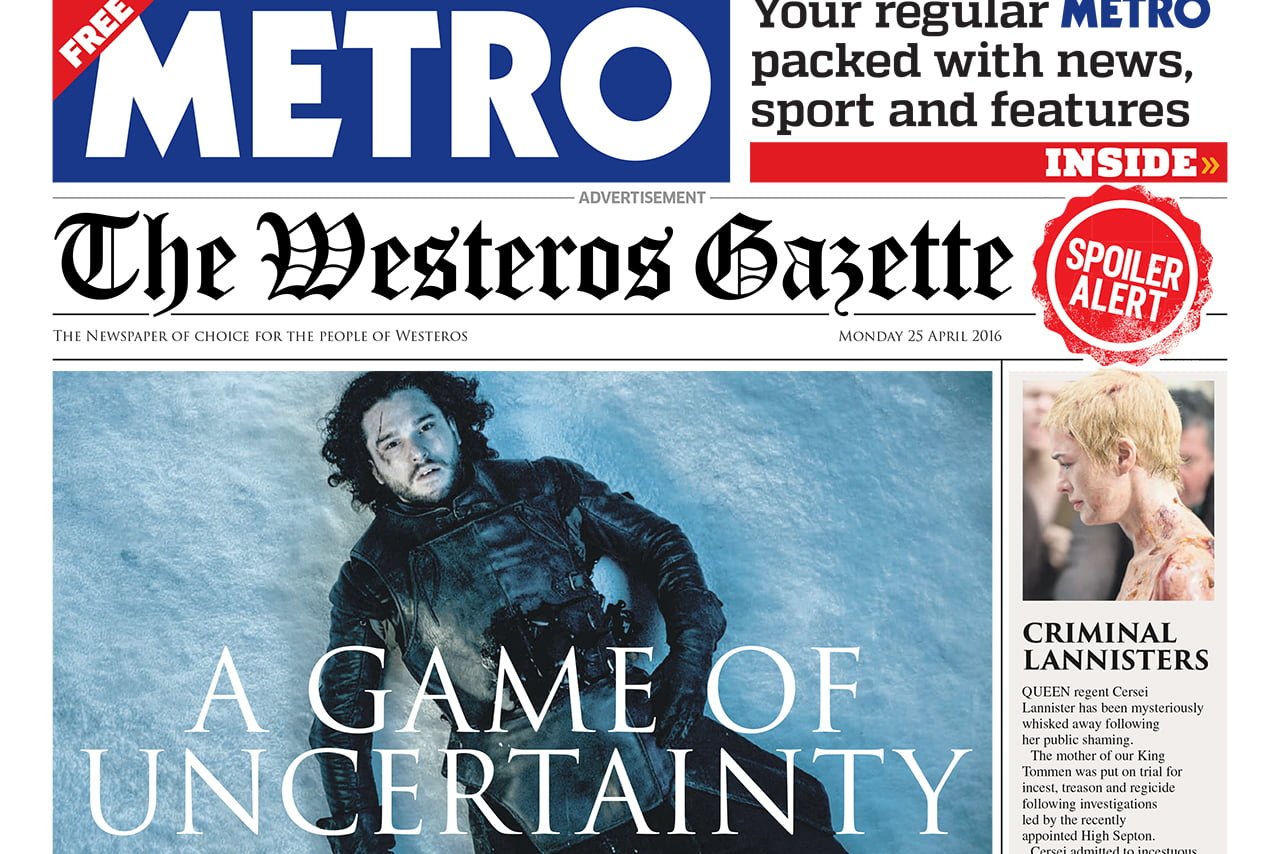
• Broadcast
Surprisingly this doesn’t just refer to TV advertising. Radio also classes as broadcast advertising, although TV takes much of the revenue of this channel. But who are we to say that radio ads don’t catch attention – there are a few earworms knocking around currently… Apologies in advance…
• Direct mail
Like print advertising, direct mail uses leaflets and brochures to target a large number of people. However, it is usually slightly more targeted than print, using demographic data to define the drop.
• Telephone
Probably the most hated method of marketing… Telephone advertising disturbs you when it’s time for dinner or you’re just about to sit down and watch Corrie. But for the bad rap it gets, it works. In fact, 90% of Fortune 500 say telemarketing is ‘effective’.
[email-subscribers-form id=”2″]
But here’s the problem.
Traditional marketing is being actively challenged by online marketing.
A generation of millennials and Gen Z’s, who are completely reliant on tech, aren’t as receptive to traditional methods of marketing.
Although to be fair, digital marketing has been around for quite a while now. The first banner ad was placed on a website in 1993. That’s 30 years ago!
Digital marketing has become much more sophisticated since those rudimentary times.
Google launching in 1998 almost single-handedly created an entire industry of SEO experts, WordPress launching in 2003 brought web design to the masses, and… Kim Kardashian made selfies a thing too.

Source: Simplilearn
But here’s the deal:
The advantage of digital marketing over traditional marketing, is that digital can be transformational, especially when the right channels are employed. So, what are the types and benefits of digital advertising?
Let’s run through them:
• SEO (Search Engine Optimisation)
This is the process of optimising your website so that it ranks on Google (other search engines are available… apparently…). 93% of digital experiences start with a search, so it’s kind of a big deal.
(By the way! If you need help with SEO for your website, you can always reach out and get the help of an expert SEO Consultant 😉 )
• Paid search (or Pay Per Click / PPC)
By defining your ideal customer, you can use a platform such as Google Adwords to display ads to them that feature your product.
This is often directly on a search results page or distributed via a Display Network, which is responsible for those ads that follow you around the internet!
With some brands, such as Ann Summers, taking an adventurous approach to advertising.

• Email marketing
One of the earliest forms of digital marketing, email marketing continues to be one of the most used and most effective channels.
The General Data Protection Regulation in 2016 has resulted in email marketing being more targeted than ever, which should mean higher conversion rates!
• Social Media
Perhaps the biggest opportunity to businesses, social media marketing comes in two flavours – organic and paid.
Firstly organic – by using a company profile to reach out and respond to customers, businesses can increase their exposure and build a positive brand perception.
Secondly, paid social advertising offers the opportunity to get your products and services in front of immensely detailed audiences – which can be refined down to the type of washing up liquid they prefer.
• Online PR
In its purest form, online PR is the distribution of press releases via email to publications. Online PR is incredibly important however, because it comes with two well-known side effects.
• Links
Often if you get your news release placed on a website, you’ll get a link back to your website. This helps your SEO AND directs people back to your site.
• Trust
If a publication deems your content good enough to place on their website, it’s a signal that you’re credible and helps build your brand.
While there are other channels, the majority of digital marketing falls into these categories.
Now, we’ve covered the basics.
Let’s get into the debate. Traditional marketing vs digital marketing that is.
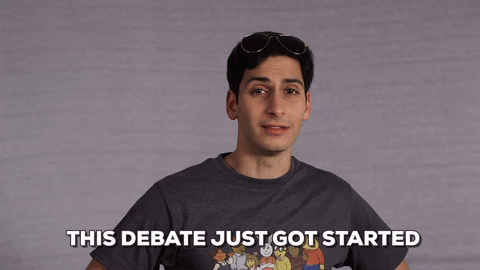
Can you reach more people online or through traditional marketing?
This is an interesting one.
There are 8.5 billion searches per day on Google, and according to Smart Insights, 62% of the population are on Facebook. Both stats naturally mean that you can target a wealth of people who would be interested in buying your product online.
However, the advantage of traditional marketing is that it lends itself to gaining exposure to new audiences. This is simply because they’re driving past a billboard, or watching TV at the right time.
Using digital channels, we narrow down as much as possible on what we think is our ideal audience. This can sometimes remove the possibility of finding customers outside of the norm.
Although to be completely honest, riding on the luck of someone seeing an ad isn’t enough for us. There’s a huge amount of available exposure within target groups online, implying higher conversion rates, and less budget wasted!
Is targeting more effective in digital marketing vs traditional marketing?
In one word, yes. Let us explain.
An advantage of digital marketing over traditional marketing is that the big platforms such as Google, Instagram and Facebook constantly try improving their services to you (which in turn, drives more ad spend – but that’s beside the point).
Take Facebook for example. You can target based on what type of a person’s interests, demographic data, location, and much more.
Plus, when you’ve found the sweet spot of people that are converting via your ads, Facebook learns from this to create ‘lookalike audiences’. In other words, people that behave in the same way as the people currently buying your products.
Traditional marketing on the other hand mainly uses demographic and location-based data. With GDPR in full force, this information could soon be stripped back due to the amount of companies processing your data without you even knowing about it.
The benefit of digital marketing is that targeting your ideal customer is much more straightforward.
Say a marketing team has already laid the groundwork and identified their most profitable type of customer. Digital marketing allows you to appeal to these and show specific ads that resonate with their needs at the right time.
So, in round two in the battle between digital marketing vs traditional marketing, it’s another one for digital.
Which type of marketing creates more engagement?
We’ve seen some incredible examples of businesses creating content that engages.
Let us set the scene.
It’s 2013. The biggest sporting event of the calendar, the Super Bowl, is in full flow.
Advertisers are cheering as their $5 million dollar ad spots have just aired.
The lights go out.
After a period of ‘what’s happening here then?’ – Oreo sent out this moment of real-time marketing gold.
Power out? No problem. pic.twitter.com/dnQ7pOgC
— Oreo Cookie (@Oreo) February 4, 2013
This shows the power of digital marketing. By posting out a timely reaction to an event of significance, they amassed thousands of retweets, likes and comments.
In reality, it’s rare that a business will ever gain the amount of exposure Oreo did, but the opportunity is there.
Comparatively, traditional marketing has a more ‘local’ set of statistics that are perhaps equally as impressive.
Come on – you wouldn’t see as many KFC ads by the side of the road if they weren’t effective, would you?
Statistics show that nearly 20 million adults in the UK see a billboard every week. That’s an incredible stat, and for businesses that are looking to gain more local clients, that’s a huge draw.
What’s more, they also claim that 26% of people that view those ads, go on to visit the company website. That’s a click through rate that people in the digital ad game would take every day of the week.
However, when it comes to engagement through digital marketing vs traditional marketing, although the stats are impressive for traditional media, the numbers are open to interpretation and success can rely on the spot you end up advertising in.
Compared to the interaction you gain by actively participating in communities online – potentially for free – digital can be much more effective.
What’s more cost effective when it comes to digital marketing vs traditional marketing?
We’ll give it to you straight.
Facebook gives you the lowest CPM (cost per thousand impressions) in advertising as a whole. That means you can reach the most amount of people for the lowest price through Facebook advertising.
“But that’s just advertising” we hear you cry.
And you have a point.
What’s better than ‘the lowest cost’? FREE. (Well… Kind of)
Search engine optimisation can provide you with countless visitors to your website, and therefore conversions, if you rank highly for the right keywords.
As we mentioned earlier, there are billions of searches every day on Google, which means it’s likely someone is searching for whatever your business provides right now.
Would they find you? If not, then it’s time you employed a small business digital marketing agency (such as ourselves). An agency that can improve your website in all the areas that Google looks for to get you in front of those searchers.
In comparison, one of the advantages of traditional marketing is that you can reach a mainstream audience that, providing your targeting is correct and ad is compelling enough, will generate sales.
The cost of reaching these people however is astronomical compared to digital advertising.
But let’s not get hung up on initial cost, because the real metric to look at is return on investment.
Take the popular show Love Island for example. Owning the official rights to the show, ITV could offer advertisers a glimpse of the elusive 25-35 consumer group. This led to partnerships with Superdrug, Missguided, Kelloggs, and many more.
The success led to ITV alone boosting revenues by 8% in 2018, and we’re sure the retailers involved also saw a similar rise.
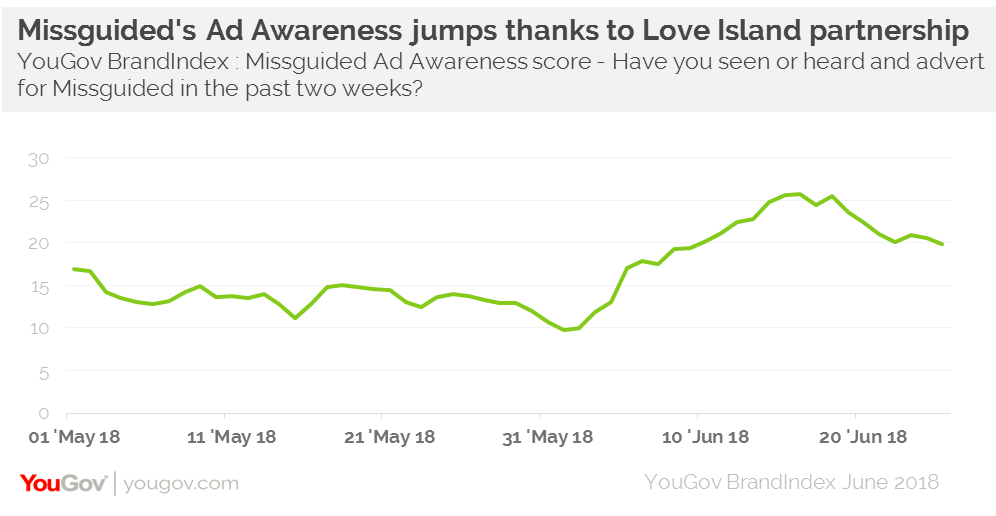
Source: YouGov
When it comes to cost in the digital marketing vs traditional marketing debate, the simple fact of the matter is that many businesses don’t have the spending power to take advantage of huge TV spots, no matter how successful they are.
Which, coupled with the advantage digital marketing brings of incredibly low advertising cost and even the opportunity to appear for free, it’s an opportunity not to be missed.
Is there less competition online, or is it easier to stand out using traditional marketing?
One of the most effective aspects of digital marketing is that no matter what size of business you are, you can get in front of your customers online.
Plus, the advantage of digital marketing over traditional marketing to small businesses is that it’s arguably much easier to get their message across.
No comms team for sign off. No waiting around for creative approval. Just make an ad and stick it up.
This essentially means that it’s easier to react to opportunities when they arise.
Comparatively, in traditional marketing services it’s often the case that the most lucrative spots are reserved for only the largest corporations.
Prime time TV spots are dominated by the biggest players, and the most viewed billboards are booked up for months upon months.

That’s not to say there’s less competition online, but there’s certainly more competition short-term in traditional marketing.
The advantage of digital marketing vs traditional marketing is that although you may be competing with similar businesses, you still have the option of appearing. And as long as you see conversions coming in, you can scale your advertising endlessly.
It’s much easier to measure digital marketing vs traditional marketing.
Measurement is key in marketing.
And the benefits of measuring digital marketing are immeasurable.
So much so that marketing teams often go storming into sales meetings armed with all the leads they were responsible for generating (and converted). Sorry. Touchy subject.
The advantage of digital marketing over traditional marketing is that there’s no room for debate.
Using measurement tools such as Google Analytics, you can attribute every sale, lead or meaningful engagement with a potential client to a specific marketing channel. This is only enhanced in the eCommerce world, with Google Analytics integrating directly with many established platforms such as Shopify and Magento.
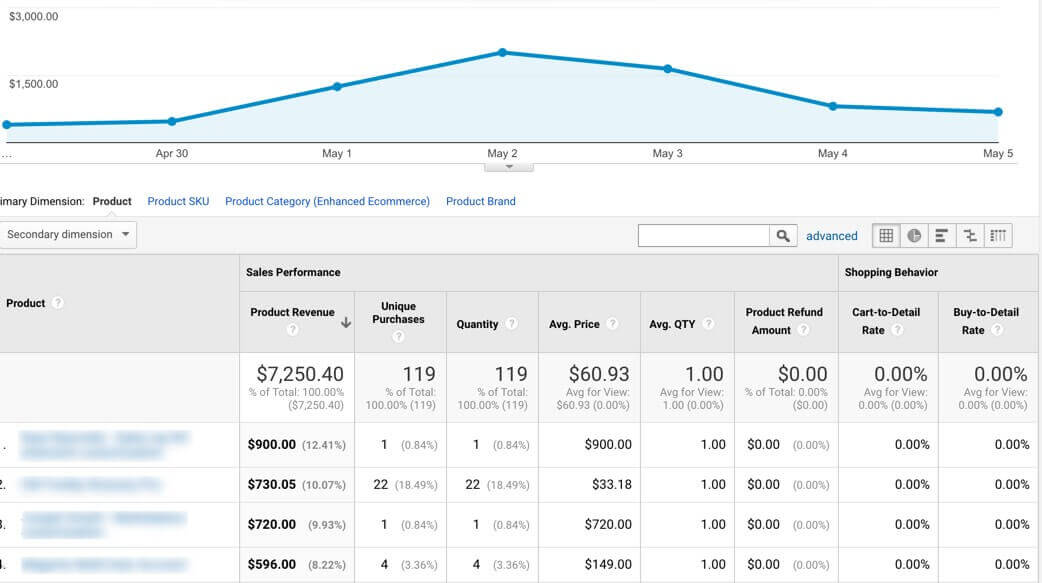
Although that’s not to say there aren’t ways of tracking offline behaviour – it’s just a little more open for interpretation.
Often relying on the use of voucher codes, customers can visit stores or add information to websites that proves they’ve only visited in response to a certain ad – one which may only appear in newspapers, for example.
In terms of the measurement of digital marketing vs traditional marketing, the former makes it much easier to justify marketing spend and report return on investment.
It also allows you to be much more strategic in how you spend budget ongoing and be more reactive to shifts in performance.
Internet marketing and traditional marketing are polar opposites when it comes to strategy.
Due to the nature of traditional marketing, strategy is often set a significant period ahead of when campaigns kick in.
This is due to the level of production needed for traditional marketing ads. Especially when it comes to TV and larger print runs (even if that’s just being too anxious about missing that final typo!).
On the other hand, the advantage of digital marketing over traditional marketing here that whilst plans can be made well in advance. The turnaround time for creative is incredibly fast.
This means reaction times are much shorter. Take the humiliating gaffe during the Olympics, where South Korea’s flag was raised before a match between Scotland and North Korea.
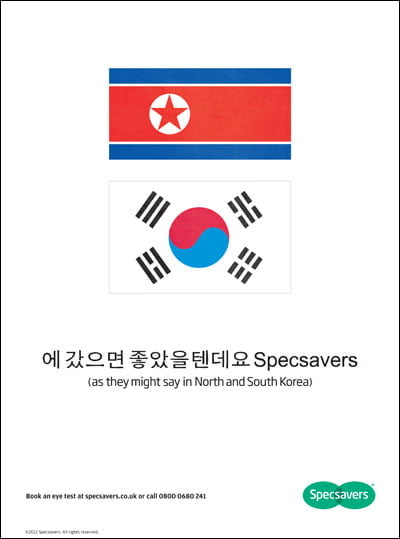
Source: Specsavers
Not that tensions were fraught enough between the two…
Specsavers capitalised on the mistake by running ads over social media with their now-famous slogan ‘Should have gone to Specsavers’.
Frankly there’s not much to choose between digital marketing and traditional marketing when it comes to strategy. What matters is that the strategy is sound and focused on the customer that will convert.
Of course, it helps that digital marketing can provide a quick response to opportunities, however these are likely more in the form of viral content than winning over new customers.
What’s better for branding, digital marketing or traditional marketing?
Although we’re advocates for digital marketing, when it comes to branding, there’s no denying that traditional marketing is incredibly effective.
The main reason for this is that when you’re given a piece of physical marketing, such as when a company undertakes direct mail for example, the information it contains is easier to process mentally and results in greater brand recall than its digital counterpart.
Even the most digital-forward businesses combine both digital and traditional methods when it comes to reinforcing their brand.
Take Innocent for example – juggernauts of online and owners of one of the most engaging Twitter accounts on the planet. Each year they invite their community to join The Big Knit, where each bottle comes paired with a unique knitted hat, all in support of Age UK.
One of the key advantages of traditional marketing is that research also suggests desirability and the value perception of products when advertised by physical methods outweighs digital.
Of course, this depends on your product. In a surprising turn of events, humans actually like having things to touch, rather than just see!
Finally, and most importantly, internet marketing has become the new ‘norm’ for many types of traditional marketing.
The familiar sight of that yellow wedge of paper dropping through the letterbox is pretty much a thing of the past.
Don’t get us wrong, we know people still love buying local.
But the idea of the Yellow Pages seems a little outdated now. Plus, we live in a world where social proof and reviews almost single-handedly make decisions for us.
Traditionally, reputable businesses would gain clients by word of mouth. That used to be a huge advantage for traditional marketing but these days it does not cut the mustard on its own.
Now that people ask for recommendations on Instagram and Facebook more than face to face, it’s more necessary than ever for businesses to have a digital marketing presence.
Digital marketing vs traditional marketing – what should you use?
Honestly? Both.
You can be incredibly successful running a digital marketing campaign that targets your audience and converts them into customers.
Using the channels we mentioned above, alongside some experts in digital marketing, you’ll see your business flourish.
Benefits of traditional marketing can complement that growth. Exhibitions, flyers, radio ads – they can all be successful. The difficulty is that it’s nigh on impossible to track them.
But if you have a digital campaign that’s firing on all cylinders, then maybe the extra exposure it could offer is worth it.
